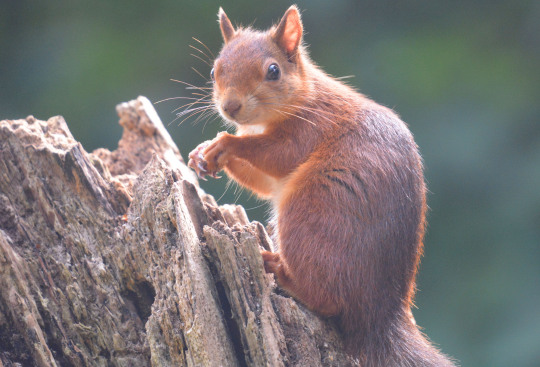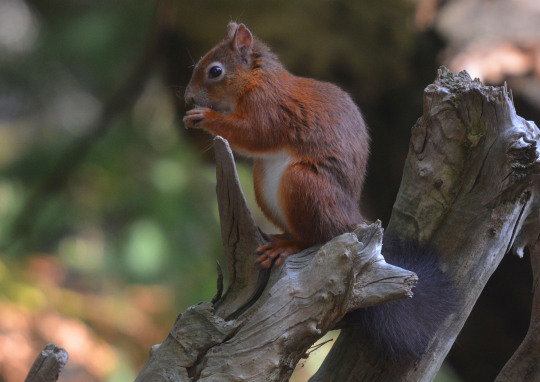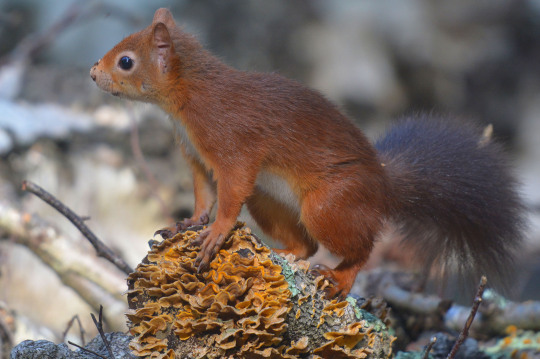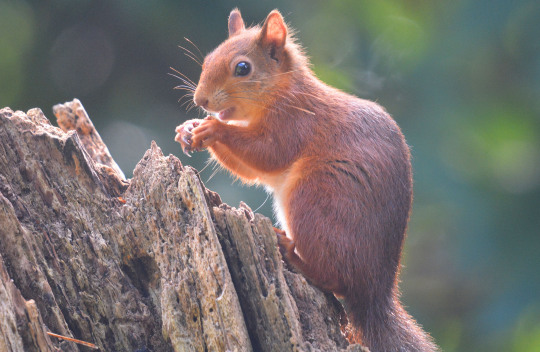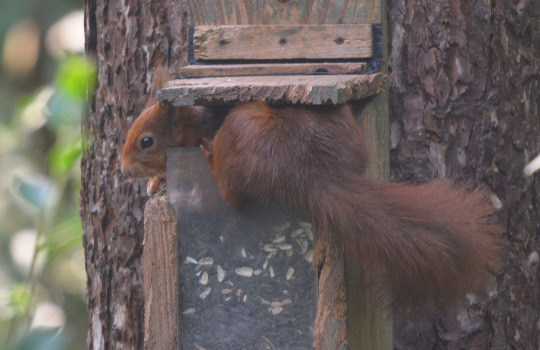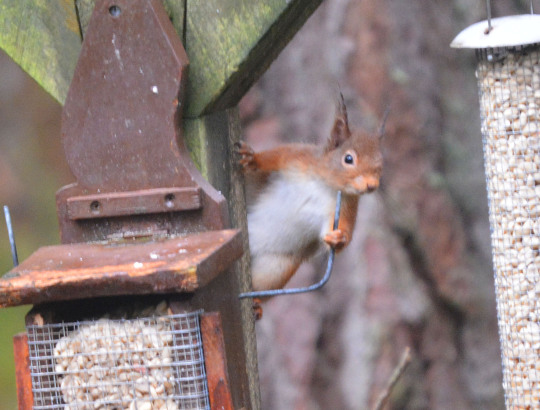#island mammals
Text

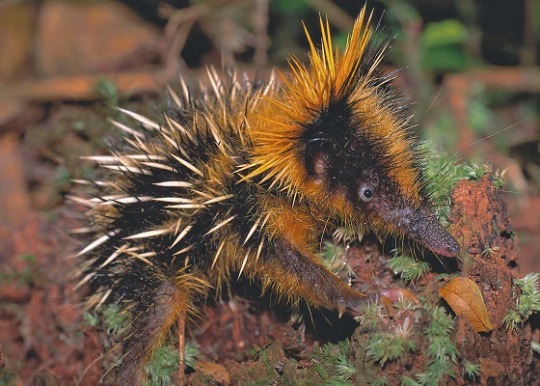

Talented Tenrecs
The lowland streaked tenrec (Hemicentetes semispinosus) is a member of the extraordinarily Tenrecidae family, which is found exclusively on Madagascar. This particular species resides on the east side of the island, in tropical rainforests. Their range can also overlap with their cousins the highland streaked tenrec, which inhabits both rainforests and savannas.
This species is quite small, ranging from only 140-172 mm (5.5- 6.8 in) in length and weighing 280 g (9.9 oz) at maximum. Despite their stature, they are hard to overlook as their coloration-- black with a bright yellow or orange crest and stripes-- can be quite striking. In many ways H. semispinosis resembles shrews and hedgehogs; the body-shape is round, with an elongated snout and large claws for digging. Like hedgehogs, the lownald tenrec also sports large quills along the length of its body as a means of protection. However, tenrecs are not at all related to hedgehogs and the resemblence is entirely due to convergent evolution.
In addition to acting as an impenetrable defence, the lowland tenrec's spines are also used for communication. When rubbed together the quills create a high-pitched sound that members of a group use to alert each other and warns away potential predators like snakes, fossas, mongooses, and civets. This species is the only known mammal to use this method of communication, which is more commonly found in insects and snakes.
H. semispinosis can be found either on their own or living in groups of up to 25, all of whom reside in underground burrows. Individuals spend most of their time foraging for their primary food source, worms, and is active both during the day and at night. However, during the winter months of June and July they may enter a state of hibernation known as torpor, during which they decrease their heart rates and metabolism.
Reproduction occurs during the rainy season, from November to May, though in ideal conditions the lowland streaked tenrec can breed year-round. Reproductively active males will spar one another for access to females, though females will also resist mating if they aren't receptive to the male. Pregnancy lasts about 58 days, after which the mother gives birth to an average of 6 young. The babies take less than a month to wean, and become fully mature at only 40 days old. On average, individuals can live about 30 months in captivity.
Conservation status: Within their range, the lowland tenrec is highly abundant and has a stable population, so is rated Least Concern by the IUCN.
If you like what I do, consider leaving a tip or buying me a ko-fi!
Photos
Harald Schütz
Desire Darling
#lowland streaked tenrec#Afrosoricida#Tenrecidae#streaked tenrecs#tenrecs#mammals#tropical fauna#tropical mammals#tropical rainforests#tropical rainforest mammals#islands#island mammals#africa#east africa#madagascar#animal facts#biology#zoology
268 notes
·
View notes
Text

Killer whale
By: D. Faulkner
From: The Fascinating Secrets of Oceans & Islands
1972
#killer whale#dolphin#toothed whale#whale#mammal#1972#1970s#D. Faulkner#The Fascinating Secrets of Oceans & Islands
473 notes
·
View notes
Text

Short Beaked Echidna, Kangaroo Island, SA, Australia
By Lucca Amorim
#lucca amorim#photographer#short beaked echidna#echidna#nature#kangaroo island#animal#mammal#wildlife#south australia#australia
456 notes
·
View notes
Text

#godzilla#godzilla king of the monsters#godzilla island of the monster madness#behemoth#requiem for methuselah#methuselah#rodan#mothra#king ghidorah#monsters#monster island buddies#prehistoric mammals#prehistoric monsters#prehistoric#fire breathing monsters#fire breathing dragon#dragons#dinosaurs#prehistoric dinosaurs#godzilla is king#godzilla posting#godzilla art#godzilla illustration#godzilla drawing
194 notes
·
View notes
Photo

A pair of Commerson’s dolphins (Cephalorhynchus commersonii) off the coast of the Falkland Islands
by Laura Jourdan
#commerson's dolphin#dolphins#cetaceans#marine mammals#Cephalorhynchus commersonii#Cephalorhynchus#delphinidae#cetacea#artiodactyla#mammalia#chordata#wildlife: falkland islands
2K notes
·
View notes
Text
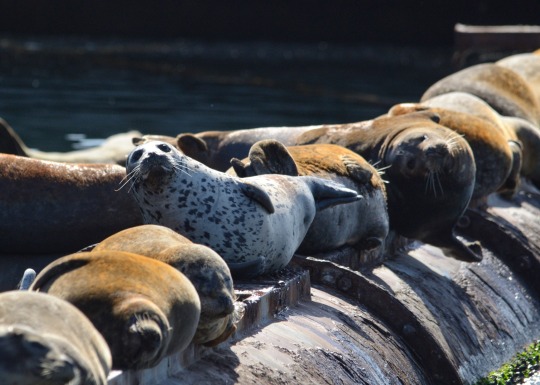
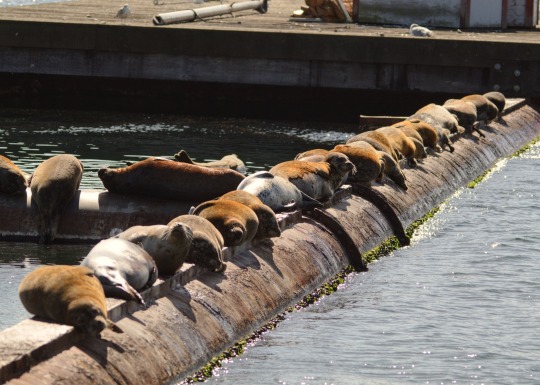
The hottest hangout spot in town
#marine mammals#seals#original photography#nature#vancouver island#nature photography#pnw#original photography on tumblr
261 notes
·
View notes
Text
Animal of the Day!
Falkland Islands Wolf (Dusicyon australis)

(Photo by Kane Fleury)
Extinction Date- 1876
Habitat- Falkland Islands
Size (Weight/Length)- 1.6 m
Diet- Birds; Insects; Carrion
Cool Facts- The Falkland Islands wolf was the only native land mammal of the Falkland Islands off the southernmost tip of Argentina. These wolves were the first canine to go extinct in modern times. They excelled in hunting nesting birds and seals and may have scavenged washed up whale carcasses. When Charles Darwin visited the Islands, he predicted that the wolves would soon go extinct due to human interaction. The wolves were rapidly hunted for their furs and out of fear of them killing livestock, resulting in the last Falkland Islands wolf being killed in 1876. The closest living relative to these wolves are the maned wolves of mainland South America. Maned Wolves are near threatened due to habitat destruction but luckily conservation efforts in breeding, habitat protection, and the education of locals is keeping their population relatively steady.
Rating- 12/10 (Canis antarcticus is no longer used as a scientific name but man that taxidermy does the wolf dirty.)
#animal of the day#animals#mammals#wolves#but not really#canine#thursday#october 5#falkland islands wolf#biology#science#conservation#the more you know#extinct#taxidermy#extinctober#maned wolf
227 notes
·
View notes
Photo

The fossilized skull of a Falkland Islands wolf, a rare find given the islands’ often acidic soil, which makes preservation difficult. Found on the grounds of Spring Point Farm on West Falkland, the skull is now on display at the Falkland Islands Museum and National Trust, East Falkland. [ x ]
428 notes
·
View notes
Text




大型犬じゃないよ。ヤクシカだよ。とてもかわいい。
@伊豆アニマルキングダム
They are not large dogs. They are the smallest deer in Japan, inhabiting Yakushima. They are incredibly cute!
@Izu Animal Kingdom
#deer#mammal#Yaku Island Sika Deer#sika deer#ヤクシカ#伊豆アニマルキングダム#Cervus nippon yakushimae#Cervus nippon
116 notes
·
View notes
Text
The Last Mammoth (2021)

"As the pyramids rose, the last mammoth mourned." A piece depicting the last of the Wrangel Island wooly mammoths, a little less than 4 000 years ago.
I never posted a solo post about this artwork, and I felt like this would be a good time, enjoy the process!
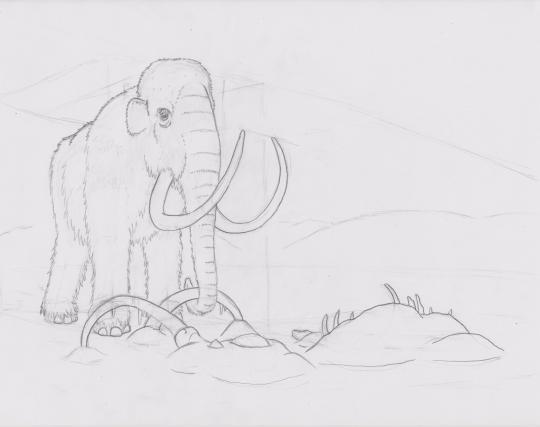

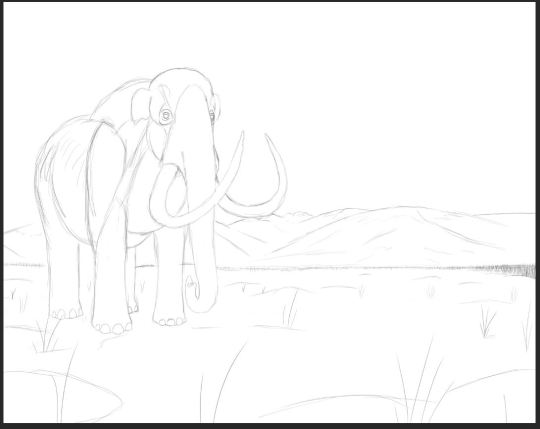

#palaeoblr#paleoart#paleontology#illustration#art#sciart#mammal#mammoth#prehistoric animals#Wrangel island
41 notes
·
View notes
Text
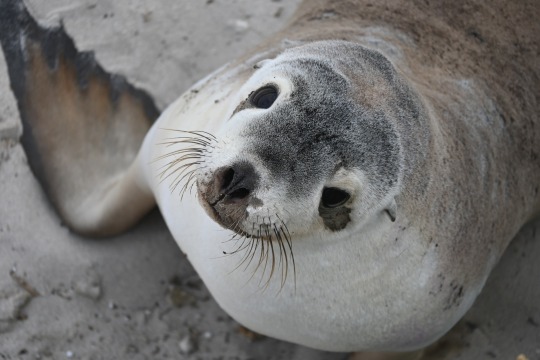

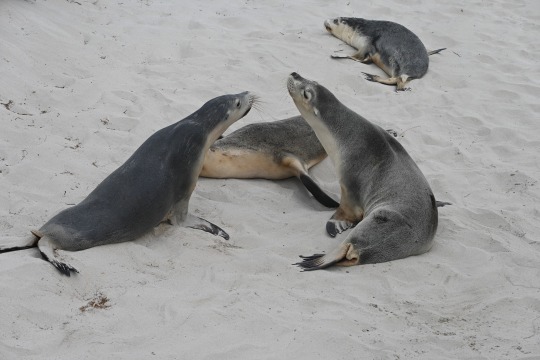
Australian Sea Lion (Neophoca cinerea) - Seal Bay Conservation Park, SA, December 2021
#south australia#kangaroo island#australian wildlife#wildlife#mammal#pinniped#sea lion#mammalwatching#wildlife photography#my stuff
21 notes
·
View notes
Text
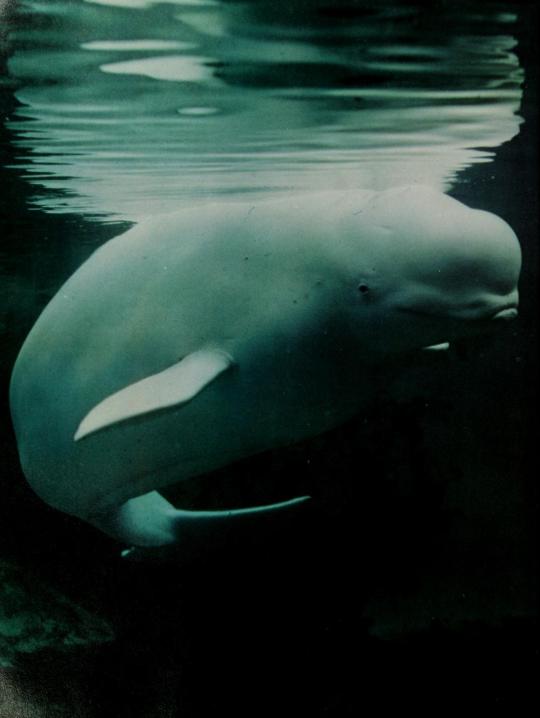
Beluga whale
By: Gerald Ferguson
From: The Fascinating Secrets of Oceans & Islands
1972
#beluga whale#toothed whale#whale#mammal#1972#1970s#Gerald Ferguson#The Fascinating Secrets of Oceans & Islands
305 notes
·
View notes
Photo

'Mesmerizing Cross Fox'
"I captured this image of a cross fox handheld from a rocking boat in a remote area on Kodiak Island, Alaska. Red foxes are native to Kodiak Island and the Kodiak red fox belongs to a separate subspecies, Vulpes vulpes harrimani. There are three common color variations of them: red, silver/black, and cross, the latter with a black/brown cross on the back and shoulders. “
By Zita Quentin
Nature Photographer Of The Year
#zita quentin#photographer#nature photographer of the year#fox#kodiak island#alaska#red fox#vulpes vulpes harrimani#kodiak red fox#animal#mammal#wildlife#nature
580 notes
·
View notes
Text

#godzilla#godzilla king of the monsters#godzilla posting#godzilla art#godzilla citydestruction policecarchase cars monstertrucks#godzilla design#godzilla singular point#godzilla minus one#godzilla minus 1#godzilla movies#godzilla comics#godzilla fanart#godzilla island#godzilla idw#godzilla raids again#godzilla the series#godzilla ultima#godzilla franchise#king of the monsters#prehistoric mammals#prehistoric#prehistoric monster
69 notes
·
View notes

